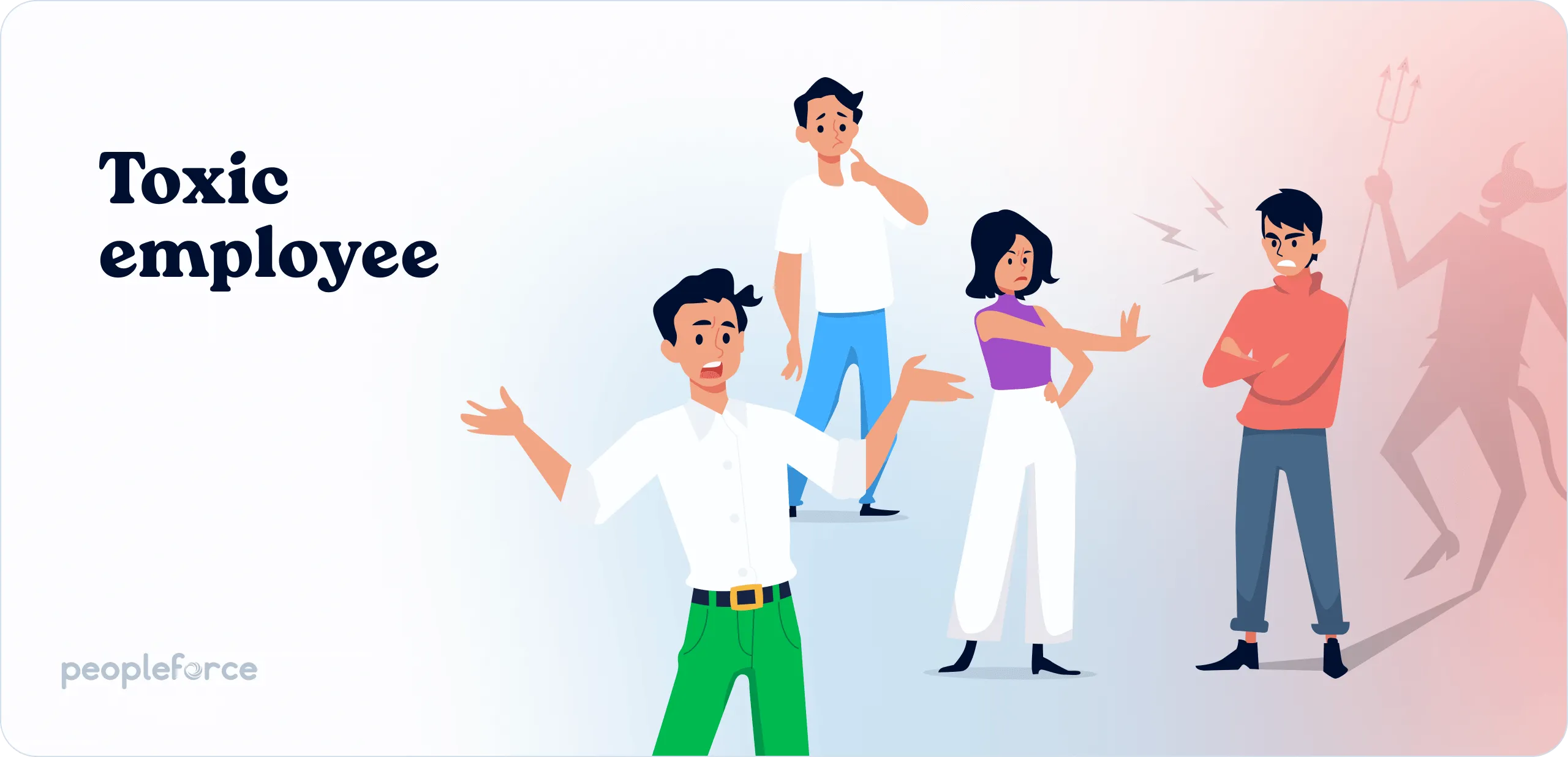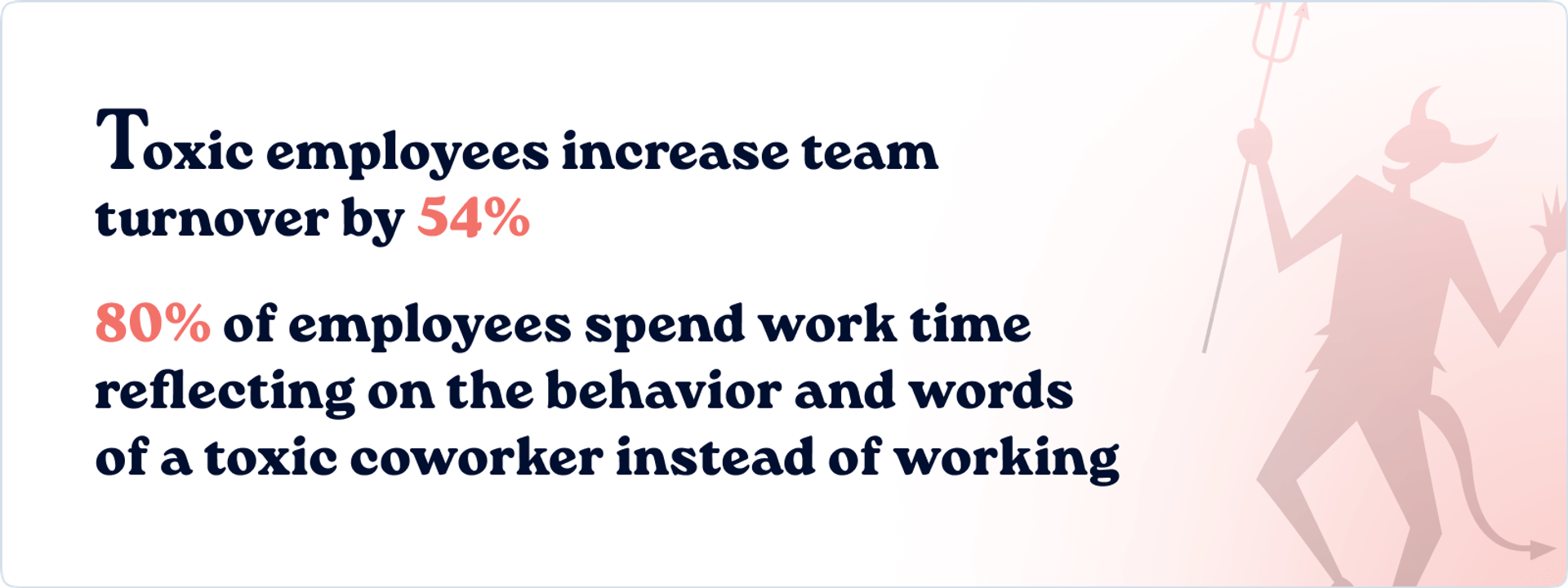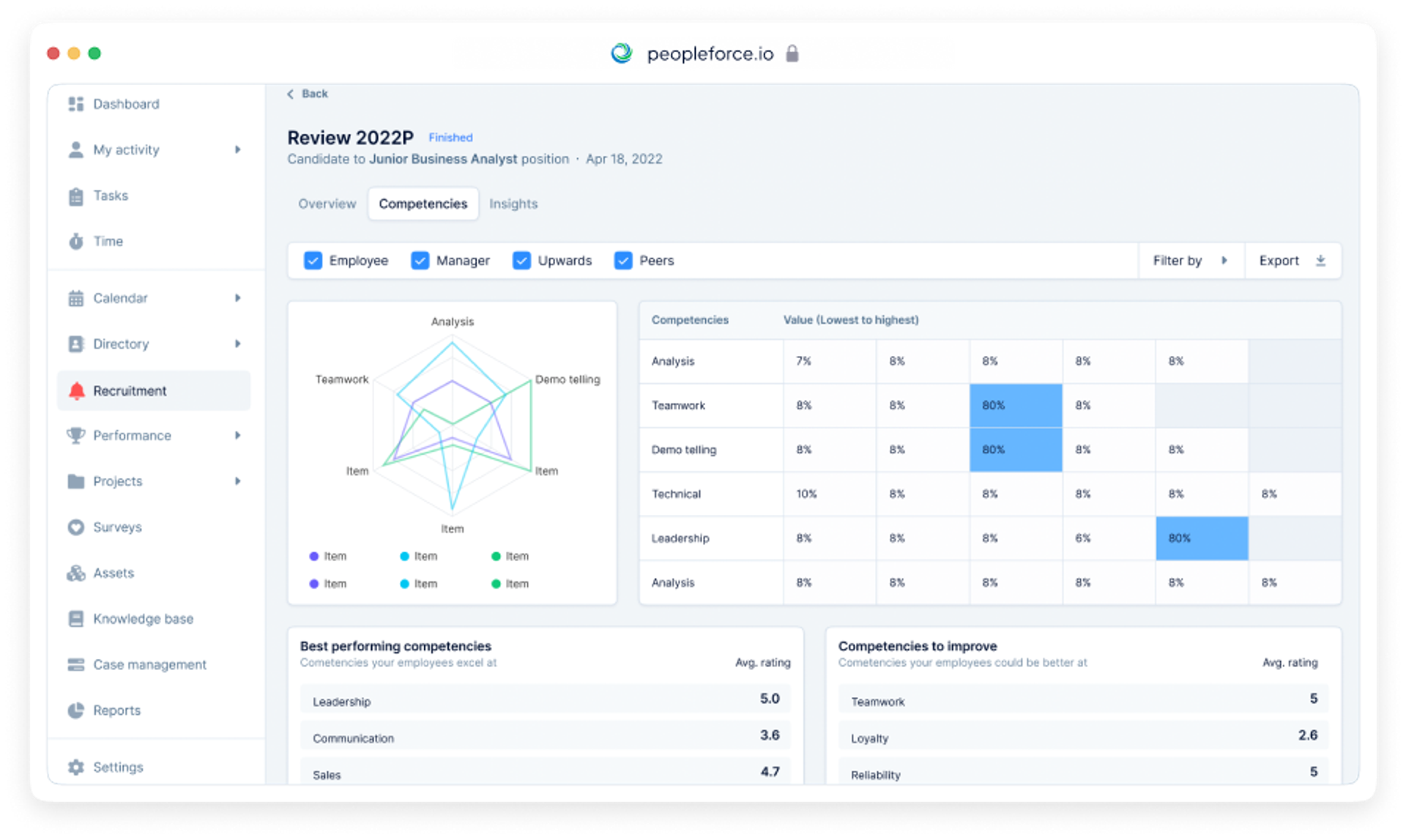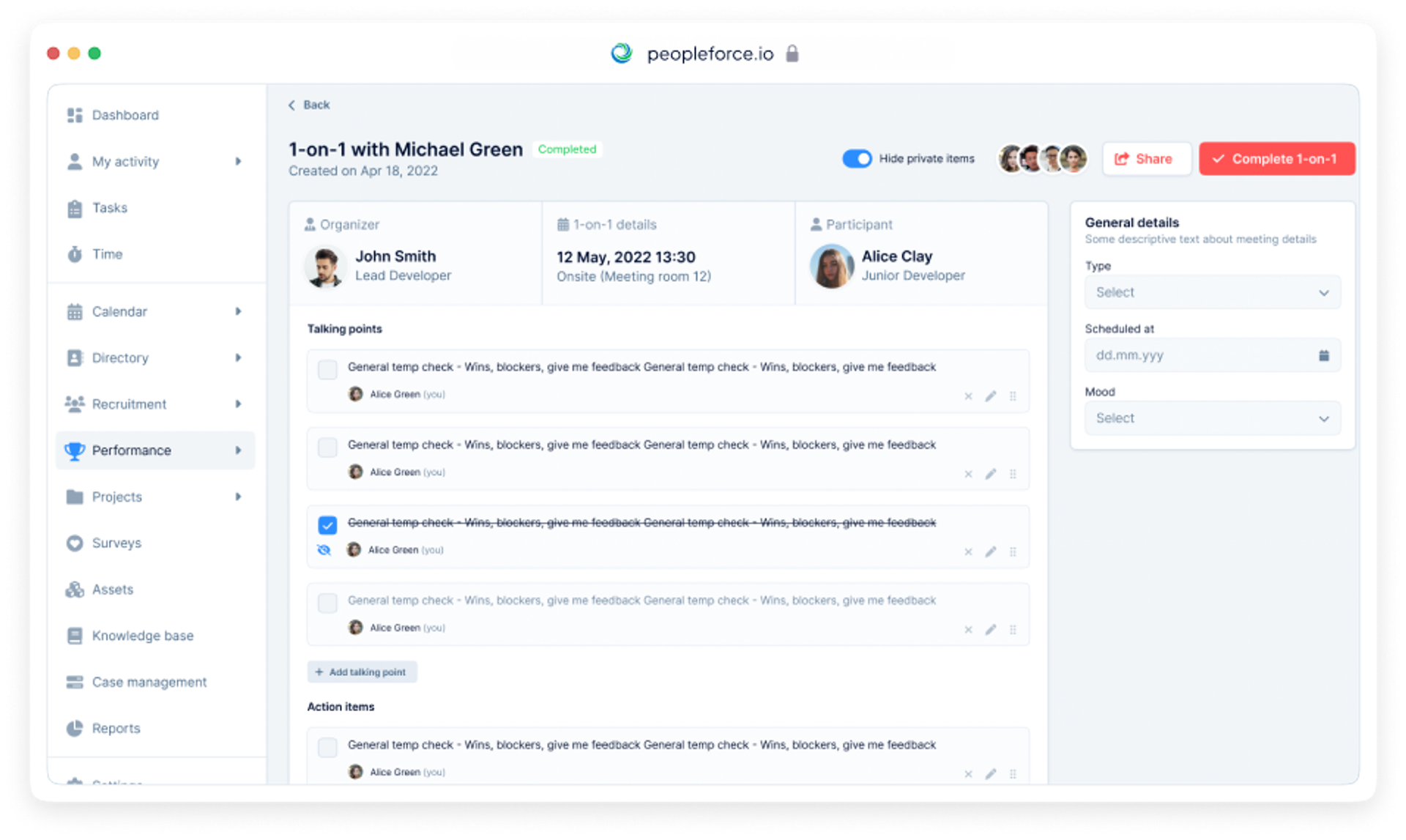
Toxic employee: how to detect and disarm?
Have you begun to notice that the atmosphere in your team is deteriorating, and that your employees have become less proactive and efficient? Perhaps a toxic employee has appeared in your Dream Team, destroying the team almost imperceptibly and negatively affecting processes within the company. So how do you figure out who is poisoning the team, and is it possible to neutralize him? Find out more in this article.
Who is a toxic employee?
A toxic employee is a person whose actions, behaviors, and emotions are detrimental to the team or company property over a period of time. Such people regularly complain, spread rumors, devalue, be rude, taunt, create and engage in conflict situations, etc. Researchers say that this is how toxic people deal with personal stress and trauma.
A toxic employee is difficult to spot at a glance. Such professionals are excellent manipulators and may not even realize that their behavior is poisoning the lives of others and harming the company.
How does a toxic employee affect the team?
A toxic employee on the team is unpleasant, demotivating, costly to the company, and contagious to other employees:
- Toxic employees increase team turnover by 54%.
- 80% of employees spend work time reflecting on the behavior and words of a toxic coworker instead of working.

- The effectiveness of professionals who encounter rudeness at work drops by 38%.
- 25% of employees who work with a toxic employee "vent" their dissatisfaction on customers.
- 78% of employees report decreased loyalty to a company with a toxic employee.
- 48% of professionals are less proactive in a toxic team.

Negative and rude behavior, according to research, is passed from one employee to another. That is, where there is one toxic employee, expect others to appear. Therefore, it is very important to determine as soon as possible who is poisoning the atmosphere in the team.
How do you detect a toxic employee?
There is no perfect formula for determining how toxic an employee's behavior may be. But research has shown, there are several signs that indicate an employee may be behaving toxically toward co-workers and work processes:
- Overconfident. Employees who are overconfident in their abilities, knowledge, and actions can be very likely to be toxic. They often disagree with the opinions of others, criticize employees' actions, sometimes devalue other professionals' contributions, exaggerate the value of their actions, and think they can get away with anything. To determine how confident an employee is, test how they rate their competencies on a scale of 1 to 5. A maximum score that doesn't hold up in practice is a wake-up call that the employee may be behaving toxically toward coworkers.
- Selfish. Such people put their own goals above others and don't think about how their actions might affect colleagues around them. Therefore, pay close attention to employees who refuse to help other team members.
- Always right. When employees follow rules and regulations, that's a good thing. But sometimes employees use rules as arguments to pick on the actions of their coworkers.
- Gossipers. People who like to discuss bring discord and distract colleagues from their work. In addition, gossip can offend other employees.
- Rude. The atmosphere in the company is quickly spoiled when any of the employees starts to be rude or rude. Often such people demonstrate their discontent in hints, letters, and notes, but rarely voice their claims directly to the face.
To always be aware of possible changes in your company's climate, conduct regular 180 and 360 degree assessments, and don't miss 1-on-1 meetings.

How do you manage a toxic employee?
Firing one toxic employee is twice as beneficial to the company as hiring one most effective person. But firing is a measure of last resort, which is worth resorting to if the following recommendations do not help.
Talk to the employee
Toxic behavior is a sign that the employee is unhappy with certain areas of his or her life. Talk to the professional informally. A 1-on-1 meeting format is ideal for this. Think in advance about all the topics you want to discuss during a one-on-one conversation. Here's a sample list of questions that will help you understand what's on your employee's mind:
- What's your mood been like these past few days?
- Lately, what are you most proud of and why?
- What support do you need from me this week? What is your top priority for next week?
- What career accomplishments are you looking forward to this year?
- What part of your job and role energizes and motivates you the most?
- Do you feel that your current responsibilities and work are aligned with your future goals?
- What do you think is keeping you from getting closer to achieving your goals?
- Do you feel that something or someone in the company is hindering your work in any way?
- Are there any issues unrelated to the company that prevent you from focusing on your work?
- On a scale of 1 to 10, how satisfied are you with your current job, responsibilities and position?
- Do you feel that you are making a positive contribution to the company through your work?
- Do you feel you have a good work-life balance? If not, why do you think this is the case and what can we do to improve it?
- Do you feel you are getting adequate feedback? How often do you think feedback sessions should be?
- What feedback and suggestions do you have for me and the company?
- How can I help you after this meeting? Is there anything we missed that you want to discuss?
After the communication, document all the information and offer the employee appropriate assistance. If the employee is unhappy with a particular work item, suggest a possible strategy for changing work processes. If the employee has family or personal problems, perhaps recommend the services of a psychologist or other professional.

Give feedback
Toxic employees may not notice or be aware of the destructiveness they bring to the team with their behavior. If you find out or notice that a professional has behaved inconsistently at a certain point, talk to him or her. Tell the employee why the behavior is unacceptable at your company, building on the company culture.
Push the employee to change
Move from words to action if the toxic employee does not want to change. In this case, point by point, lay out what the future holds employees who don't want to adhere to the corporate culture: from taking away social benefits and bonuses to firing them.
Curb the spread of toxicity
Look out for the well-being of other employees who may encounter the toxicity of a colleague. To do this, allow the "problematic" professional to work remotely if possible, or arrange for a separate workplace until the employee has worked through the disadvantages of his behavior or until he leaves the company.
The best way to avoid encountering a toxic employee in the company is not to hire such a person. What methods help you hire the right employee, we tell you further.
How not to hire a toxic employee?
During the search for the optimal candidate, recruiters and HR managers often pay a lot of attention to hard skills, soft skills remain a bit on the sidelines. But it's the flexible skills that allow you to understand what kind of person you're looking for. So use a structured interview and pay attention to detail during the interview:
- the punctuality of the candidate's arrival at the interview;
- how he behaves with the office manager and other employees with whom he is in contact during the interview;
- how he or she responds about former employees and supervisors;
- whether the candidate's behavior is friendly, rude, or condescending;
- whether the candidate's behavior changes after the meeting is over.
If you have doubts after talking to the candidate, talk to his former colleagues. It's their feedback that will give you a complete picture of your possible future employee.
We wish you to quickly identify toxic employees, candidates, and effectively neutralize them.
Get started with PeopleForce today
Automate your HR routine to create a high performance culture in your company. PeopleForce is your best HRM alternative to stay business driven but people focused.

Recent articles
Top 25 methods of hiring pre-screening
Pre-screening is a preliminary assessment of the professionals with whom we will have to collaborate with. In this case, we are only interested in working skills/hard skills.
What is an HRMS? - test
An HRMS is a CRM system focused on your own people, not your customers, with tools and supporting technologies to help you attract, engage and retain the right people for your company's success.
PeopleForce announces $2 million in seed funding led by Pracuj Ventures
We are thrilled to announce a $2 million follow-on investment led by Pracuj Ventures

